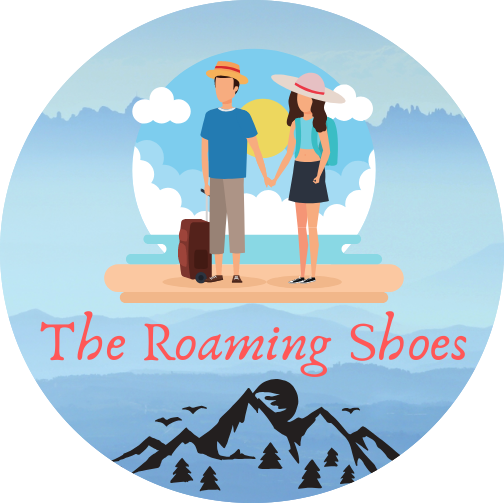Chasing Northern Lights – Maximising Your Chances to See and Capture the Magic
Let me say this loud and clear – the Northern Lights, or Aurora Borealis, are pure magic. No photo or video truly ever captures what it feels like to witness them dance across the sky. And the more you see them, the more they pull you in, like an addiction. Our local guide, who had seen countless Auroras in his lifetime, was so overwhelmed that he dropped everything, laid down in the snow, and laughed uncontrollably, gazing at the sky in awe. Yes, literally!
And for us – we hugged and shed tears of joy seeing the streaks of pink and green spread across the sky in a celestial dance. But here is the thing – the Aurora is elusive and unpredictable. May be that is why it’s often called Chasing the Northern Lights. And chasing this elusive wonder takes planning, patience, and a bit of luck. From our experience through Norway and Finland, here’s a complete guide with tips to maximise your chances of seeing the Northern Lights and photographing them.
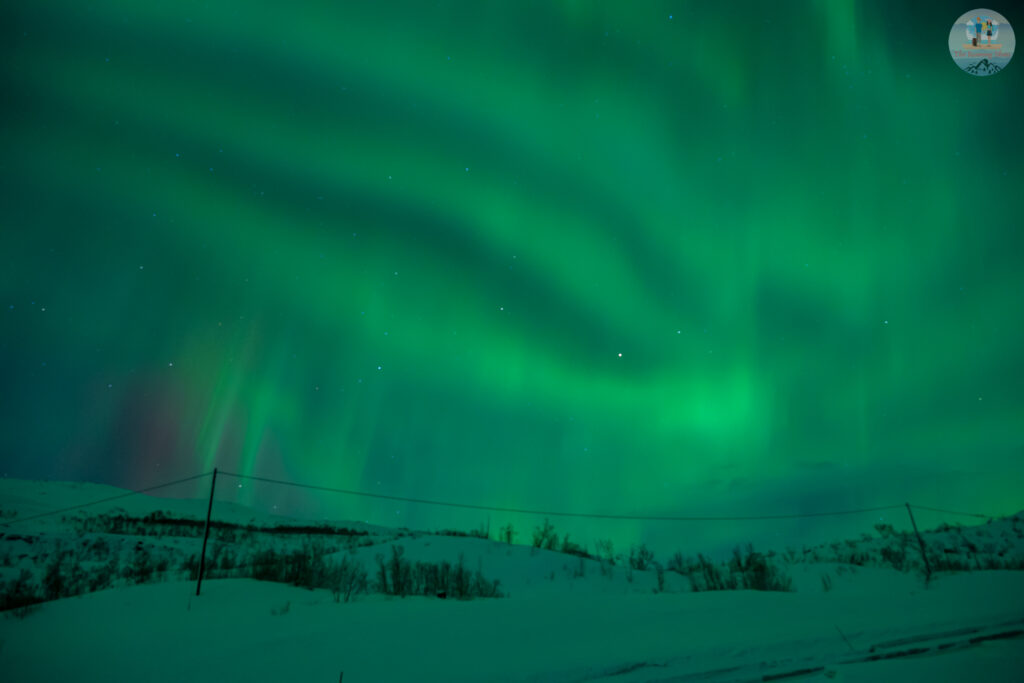
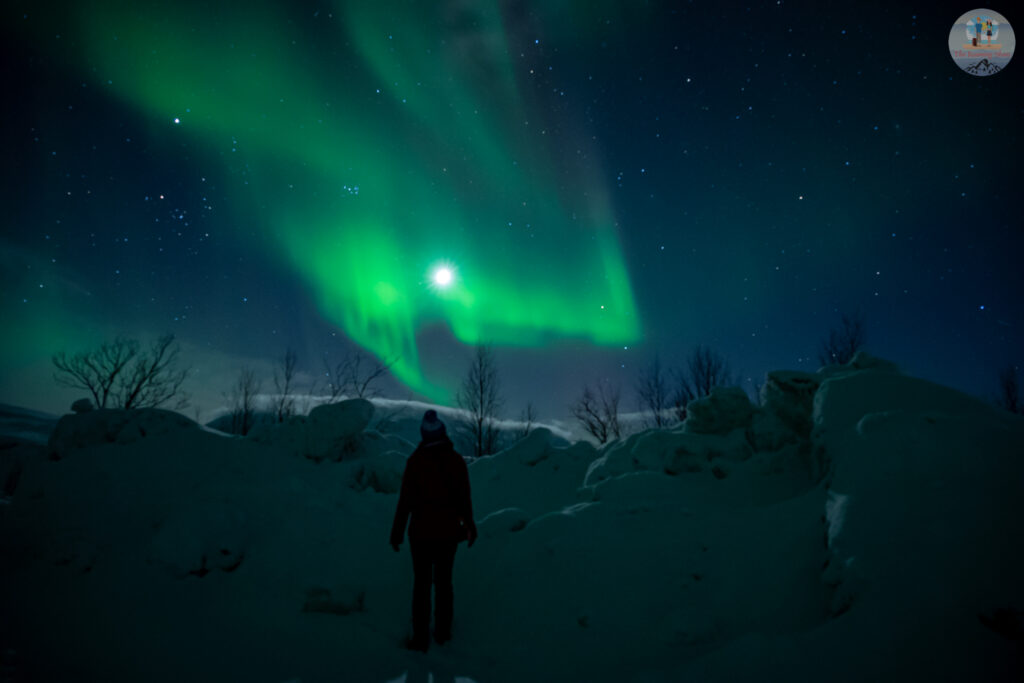
Best time to see the Northern Lights
Late September to March is considered the best time to see the Northern Lights. Even though there are chances to see it during the initial days of April, I would not rely too much on it due to days getting longer. That said, Aurora activity tends to peak around the equinoxes – thanks to increased geomagnetic disturbances during those times. So, if you’re planning your trip, try aligning it close to the spring or autumn equinox for better chances.
We visited in March 2025 and were lucky to witness the most incredible Aurora displays. In fact, even after we returned, we kept seeing photos from fellow travellers who caught even more vibrant shows later that month.
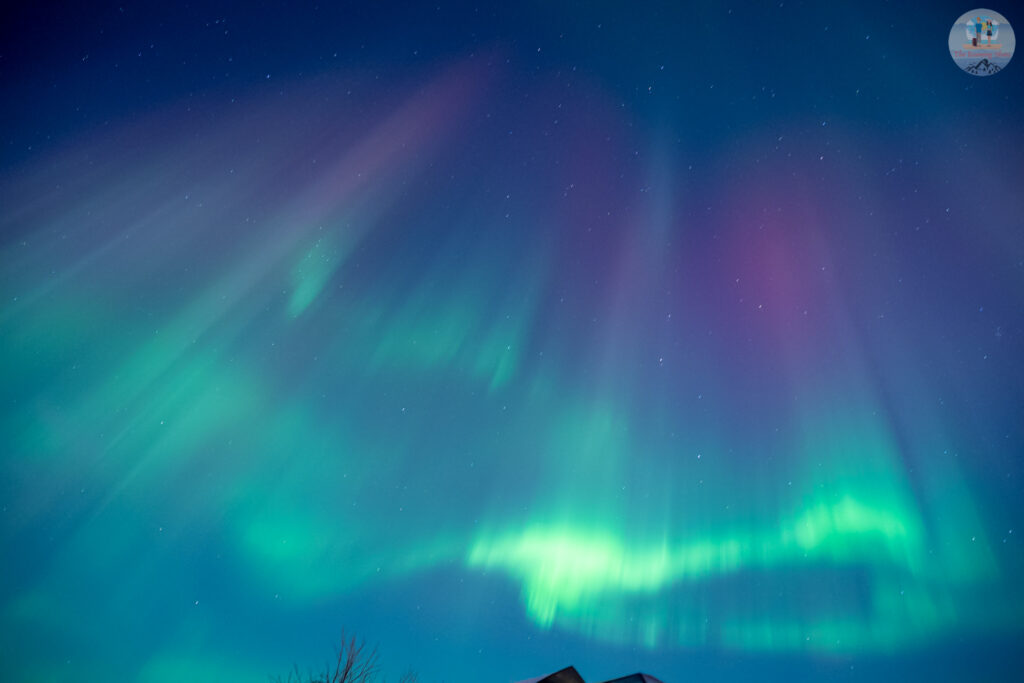
5 Tips for Planning your Northern Lights trip
Choose places with higher Aurora sighting history
While planning your trip, do not just go with traditional tourist places. Instead, try and add one or two offbeat places to your itinerary that have a history of good aurora sightings. This was the reason why we added Kilpisjarvi in Finland to our itinerary. This remote town close to the Norway border is directly under the aurora oval and as per statistics, offers the chances to see aurora on 75% of the nights. We stayed there for 2 nights and on the second night we could see a breathtaking show that lasted for hours. There are some other places in Lapland which offer great aurora sightings, choose which fits well into your itinerary.
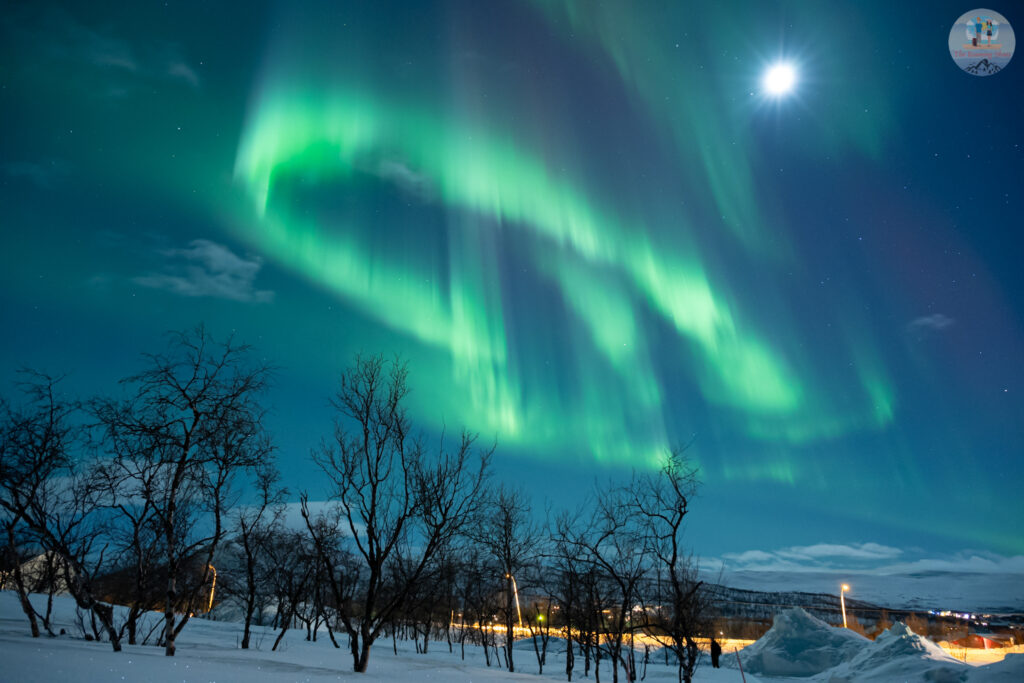
Stay at least 3 Nights at Prime Locations
Chasing the aurora isn’t about covering ground, it’s about giving yourself time in the right places. The longer you stay, the better your odds. That’s why a 2-3 nights stay in one location is ideal – it gives you the buffer you need against unpredictable weather or low aurora activity.
We learnt this first-hand in Tromso, considered one of the best places to see the Northern lights. Out of our 4 nights there, we went aurora hunting on two – and only one rewarded us with a stunning aurora display during a guided tour. The other night, the clouds refused to budge even after hours of waiting. In Kilpisjärvi, we saw both extremes: one night was swallowed by a snow blizzard, but the next evening opened up to clear skies and gifted us a breathtaking, full-sky aurora show. So yes, that’s the point I was trying to make.
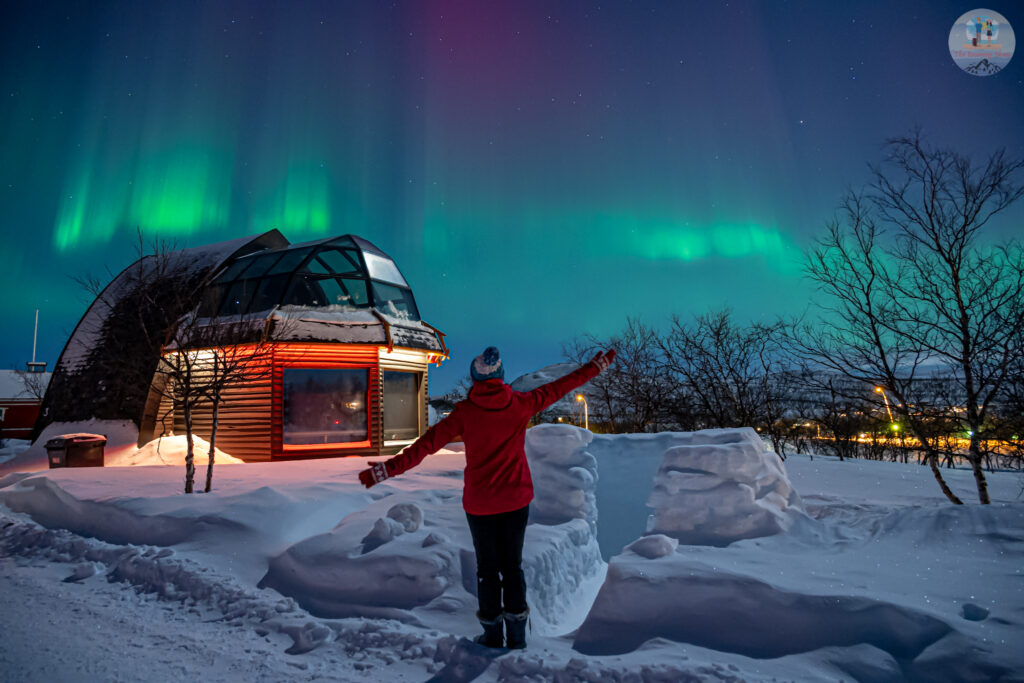
Book Accommodation away from the City Lights
Staying a little outside the city definitely boosts your chances. You’ll be away from light pollution, under darker skies, and might even catch the aurora without stepping out. This saves the trouble and cost of going on Aurora tours which are definitely not cheap. We could see the Northern lights right from our rooms in both Kilpisjarvi and Inari. Especially for Inari, looking at the magical sky in the middle of a frozen lake away from everything else was unlike anything else.
This works best if you have a rental car or just want to unwind somewhere remote, like we did in Inari.
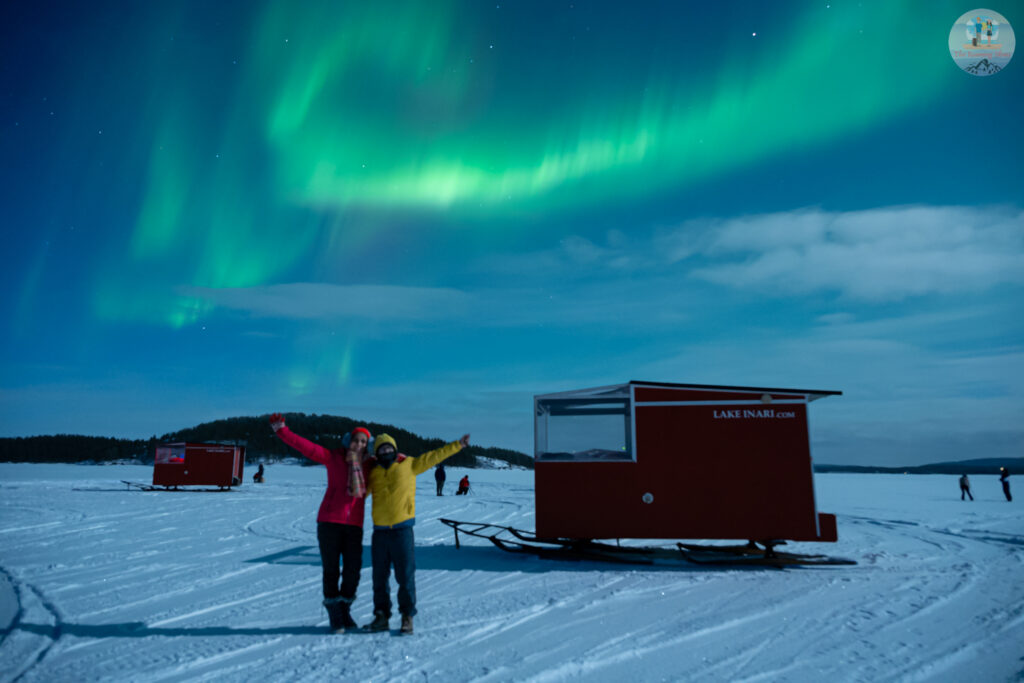
Choose Local Operators for Northern Light Tours
When booking Northern Lights tours, choose local guides over larger companies. Local guides seemed to have an active network of contacts and they will often keep driving from spot to spot, chasing clear skies to give you the best possible chance.
Our two aurora tours in Tromsø proved this. We had our first-ever Northern Lights sighting with a local guide, just when we had almost given up. He stayed in touch with his network throughout the drive, kept updating us, maintaining the energy and hope even when skies stayed overcast. After nearly two hours of chasing, he finally stopped at a quiet spot and that’s where we witnessed a dazzling display we’ll never forget.
On the other hand, the bigger operator drove us to a predetermined location near the Sweden border where we waited around the fire relishing some yummy soup and cookies. But the stubborn clouds did not move and we had to finally come back after hours of waiting. The only consolation was the good drive and spotting of the elusive arctic hare on the way back. Meanwhile, another local guide we follow found a clear spot that same night, delivering for their group. That’s the kind of difference local insight can make.
Book your Aurora tours in advance (at least a month before) as the highly rated local guides get booked pretty fast.
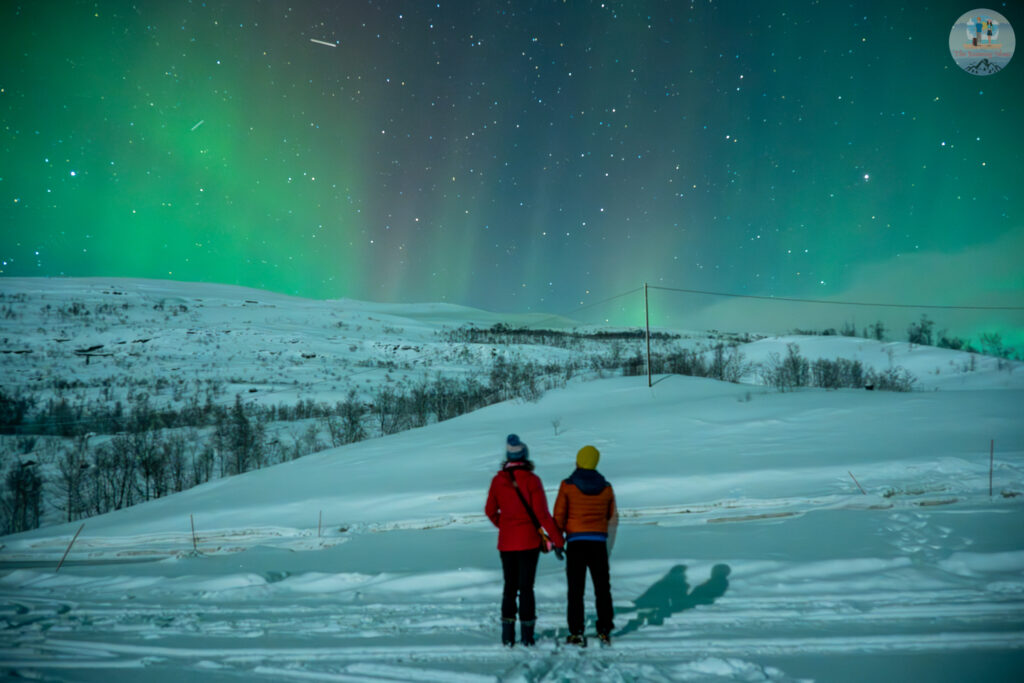
Try the chase More than Once (with buffer time in between)
Don’t pin all your hopes on a single tour. The Northern Lights are quite elusive, and it often takes multiple attempts to catch a good show. If you’re booking guided tours, make sure to leave buffer days in between. This way, if a tour gets canceled due to bad weather or anything else, you’ll still have a chance to reschedule.
We were lucky to see the lights on our very first tour, but the next three nights didn’t work out due to cloudy skies.
Photography Tips for Northern Lights
Photographing the Northern Lights had always been Sush’s dream. He’d spent hours reading, experimenting, and figuring things out before the trip. And along with what we learned during the trip, here are a few tips that might help you capture the Aurora just right.
- Phones can work, but with Limits: Some smartphones do capture the aurora decently in both photo and video modes (our iPhone did pretty good). But in low light, the quality often falls short compared to what a good digital camera can deliver.
- Use a Camera with Good Low-Light Capability: A digital camera with a fast, wide-angle lens and strong low-light performance works best. Our Nikon Zf camera with NIKKOR Z 24-120MM F/4 S Lens handled the aurora quite well. For capturing the aurora, you will need to use long exposure shots. Most of our shots are taken with 2-4 seconds exposure. To know more about camera settings like ISO, shutter speed, and aperture, refer this blog. We found it really helpful.
- A good Tripod makes a Big difference: A sturdy tripod with remote is a must to avoid any shake – handheld shots rarely do justice to this beauty. Also, make sure your tripod has a good vertical tilting. We could not capture the most amazing overhead Aurora due to our old tripod’s limitations. Most aurora tours provide tripods too – check in advance.
- Include the landscape too: Don’t just capture the Aurora, include the landscape too. The landscape makes it even more dramatic and sparks creative imagination. Sometimes it looks like a mystical creature kissing the ground. Other times, it’s a delicate, transparent curtain gently drawn over the snowy landscape.
- Videos work best in Timelapse: Videos of the Northern lights don’t come too well in the dark unless the light is strong. And the best way to capture them is on time-lapse mode (in-built in cameras) where you can literally see them dancing and spreading.
- Carry Extra Batteries: The cold drains out batteries fast. So carry at least another spare battery for your camera.
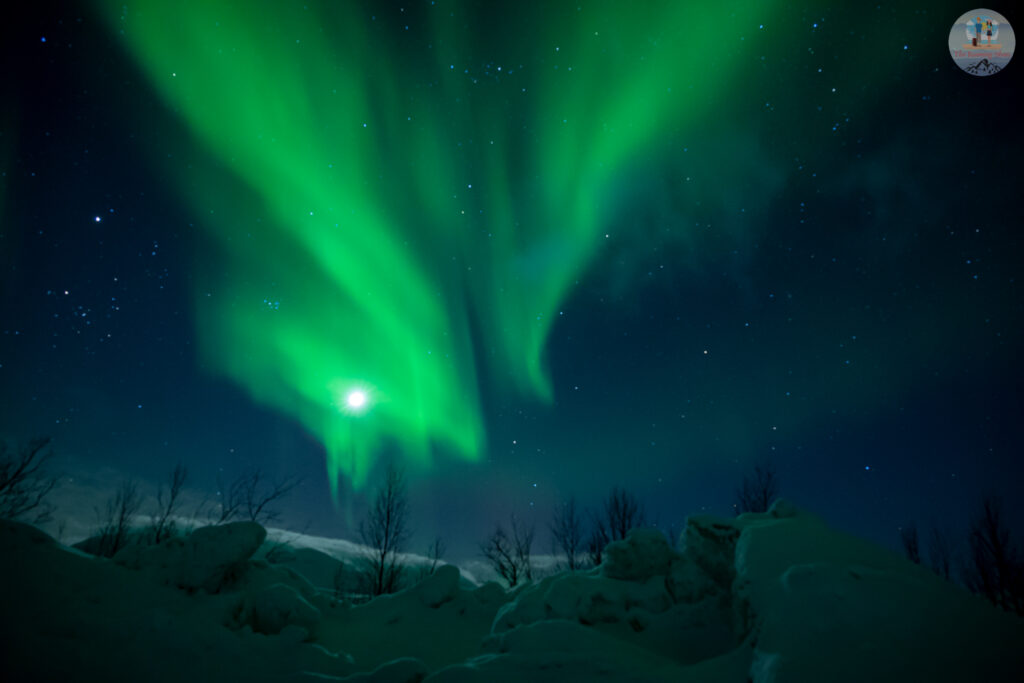
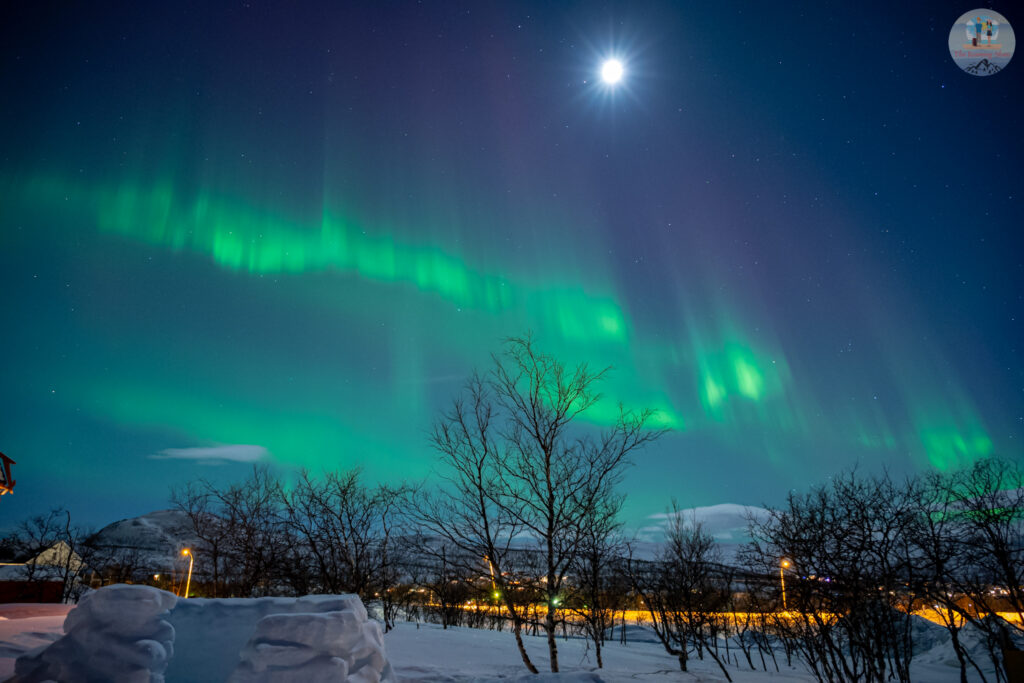
And above all, Don’t forget to enjoy the moment. It’s easy to get caught up in adjusting settings and framing shots, but remember: no camera can capture what your eyes and heart see and feel in that moment. As our guide wisely said, “Your camera won’t remember this night, but you will.”
Pro tip: If you’re on a guided tour, most guides are skilled photographers and will take beautiful pictures of you with the aurora. Their little trick of softly moving a flashlight in front of you helps light up your face just right. If that’s the case, let the pros do their magic and you just soak in the show.
Know before you go
Aurora to the Naked eye and Setting the right expectations:
When the aurora is faint, it often appears more like a soft greyish cloud to the naked eye. But point your camera at it (even a phone) and suddenly it looks much brighter and more colourful. That’s because cameras can capture light and colour far better than our eyes, especially in low-light conditions.
Also, many pictures you will see on the social media are enhanced. So don’t base your expectations purely on what you see on the internet. That said, nothing beats the real thing. Even the faintest hint of green shimmering in the sky, when you’re standing there in the dark in freezing cold – it feels absolutely exhilarating. And when it is strong, the colours are truly incredible!

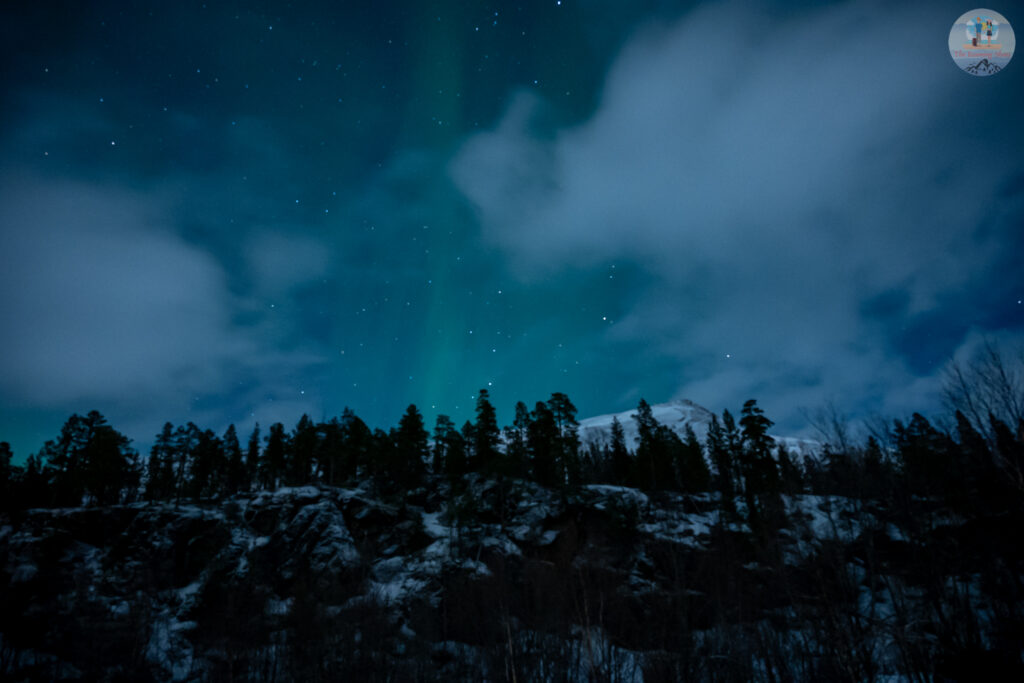
Patience, patience and more patience
When you are chasing the Northern Lights, bring plenty of patience. Because sometimes you’ll have to wait for hours in the cold before they appear, and even then, they might start faint before building into a full display. Sometimes it may be days before you get the 1st glimpse.
On our first aurora tour, it was 2 hours of drive to find the right spot and then another hour or so before the lights started spreading across the sky in a vibrant shade of Green. And after this day, we got our next chance only after 4 days of waiting and 3 failed attempts 😀 .
Aurora and Moonlit Nights
Don’t worry if your trip overlaps with a full moon – moonlit nights are not necessarily bad for aurora viewing. In fact, the moonlight actually adds depth and drama to the landscape, making the entire scene feel otherworldly. We had all our aurora sightings on moonlit nights and believe me the combination is out of this world. Having said that, the aurora has to be strong enough to shine through the moonlight.

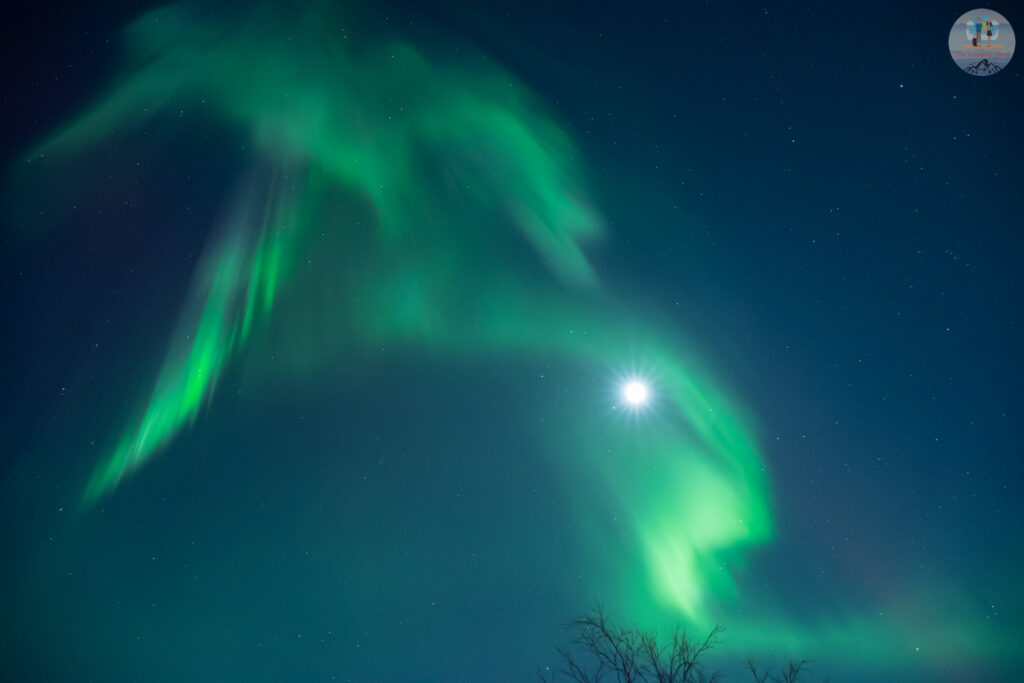
Aurora Tours Or DIY?
It depends. If you’re staying outside the city, away from light pollution, you do not need a tour. There’s a good chance you’ll catch the lights right from your accommodation or by driving a little farther into darker skies. Talk to your hosts or any local and they will be able to tell you about the lesser known spots perfect for watching the Aurora.
However, if you’re staying in a city like Tromsø or Rovaniemi, joining a tour is the better choice. Tours are especially helpful when weather conditions are unpredictable – they’ll drive long distances if needed to find clear skies and the best viewing conditions.
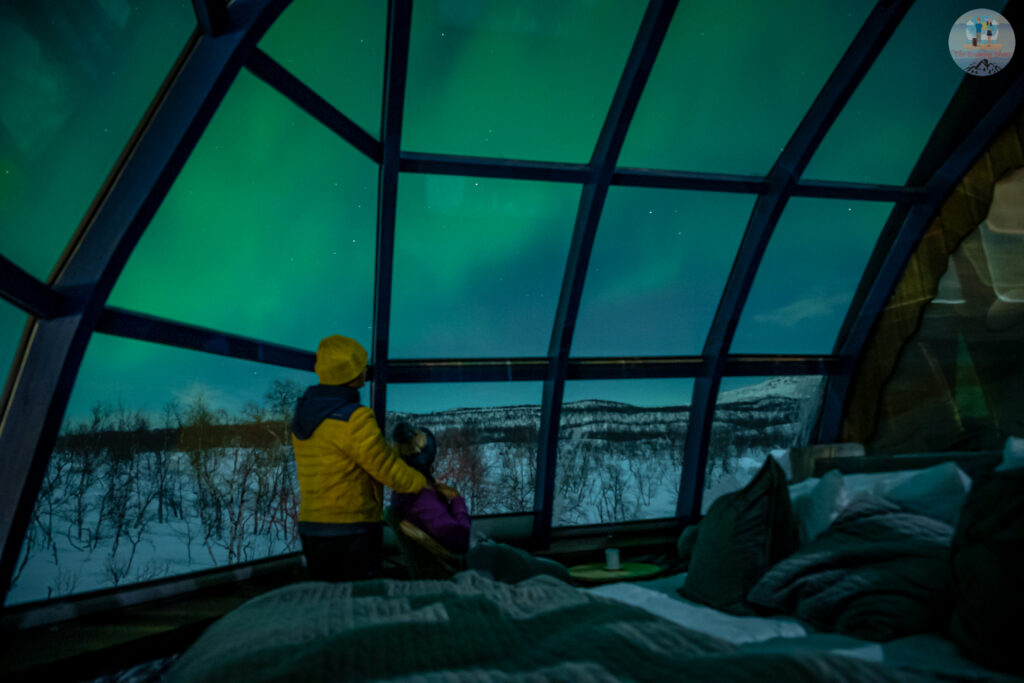
Guaranteed Aurora tours are not exactly very helpful
Unless your tour gets cancelled due to bad weather or you don’t spot even the faintest streak of light, these so-called “guaranteed” tours don’t really mean much. Many operators take long-exposure photos of barely-there auroras that paint a very different picture compared to reality.
I know this as we experienced exactly the same on our 2nd aurora tour – the lights flickered faintly through the clouds for barely five minutes and vanished. But the photo our guide clicked made it look like we witnessed a full-blown display of bright green lights! So don’t rely too much on the “guarantee” tag; it’s more about timing and luck.
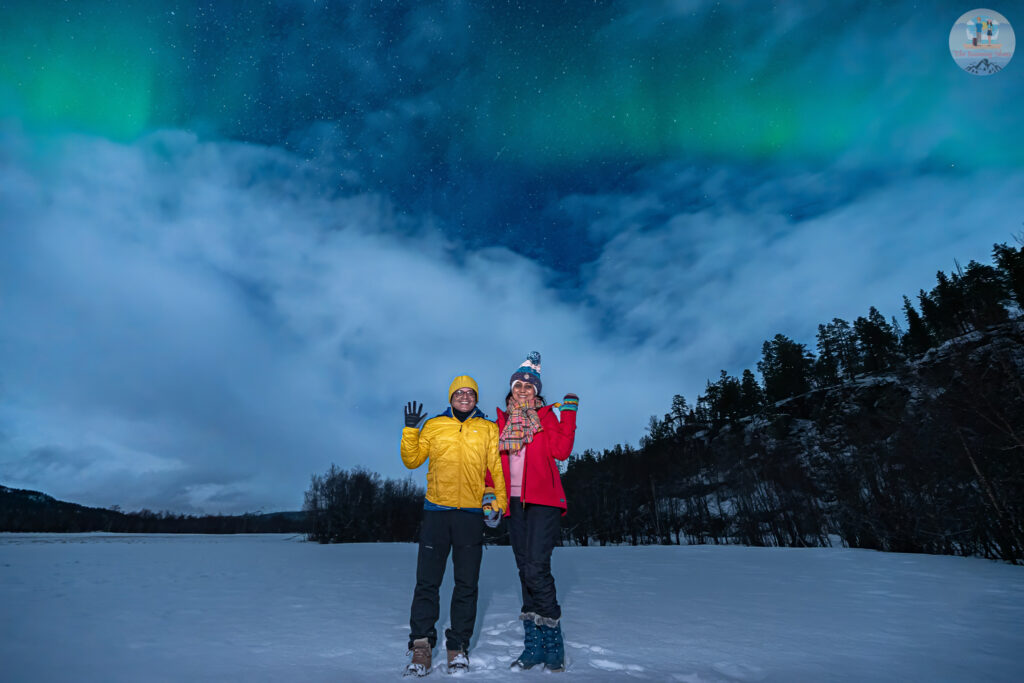
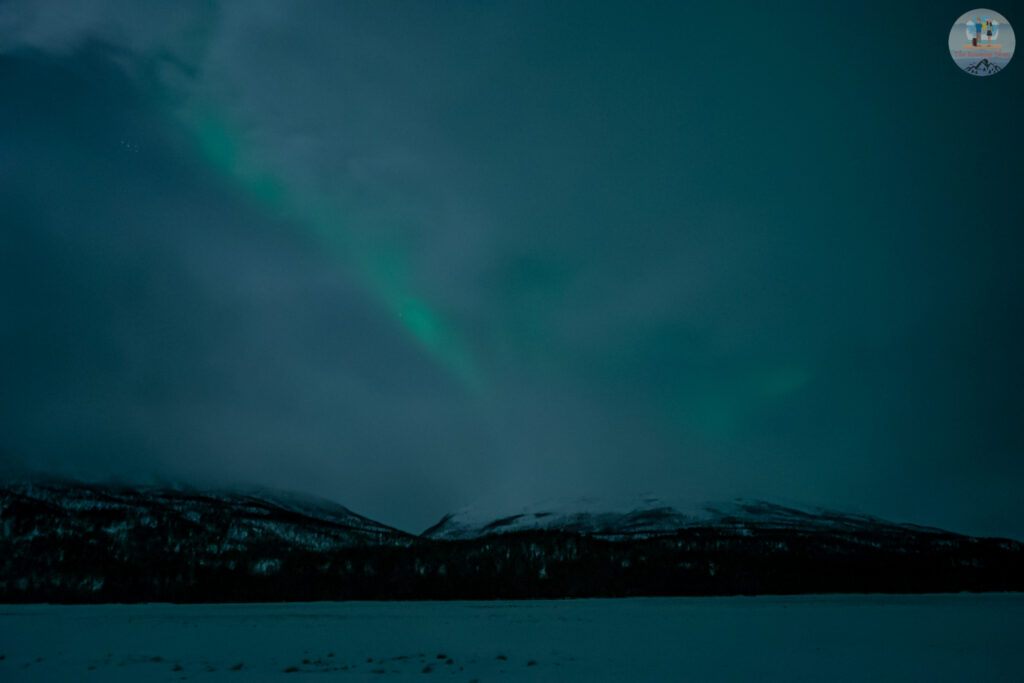
Northern Lights are never Guaranteed
Yes, it’s true. The aurora depends on several environmental factors – and unfortunately, none of them are in our control. Even with a high KP index, you might not see the lights if the weather doesn’t cooperate. So, Do Not plan your entire trip just around the Northern Lights.
Keep other experiences in your itinerary – things you truly enjoy. Go for a Reindeer sleigh ride inside a magical forest, float in a frozen fjord or experience staying in a cute cabin on a frozen lake in the middle of nowhere. That way, even if the aurora doesn’t show up, your trip will still be memorable. And if it does? Well, that’s just the icing on the cake 🙂 .
Useful Links for your Aurora Trip
Aurora Webcams: Aurora webcams are a great way to monitor live aurora activity in real time at specific locations. They’re set up in many places across Sweden, Norway, Finland, Russia, Alaska, and Northern Canada. This is particularly handy when it’s freezing outside and you don’t want to keep stepping out to check the sky. Just monitor the webcam for your location, and head out only when the lights actually show up. It really helped us in Inari, especially while waiting for the clouds to clear.
Fun fact: Even after we got back from the trip, Sush kept checking the cams before bed all through the aurora season – told you, it’s addictive! :)
Aurora Now App (For iPhone and Android): There are plenty of apps out there to track aurora activity, but Aurora Now is the one we used and found genuinely helpful. It helped us monitor aurora activity with real-time forecasts, and even sent alerts when the chances were high. If you are chasing aurora on your own, then this is a great companion.
Conclusion
Like The Alchemist said, “When you want something, all the universe conspires in helping you to achieve it.” And I had wished – with all my heart – to see the Northern Lights in their many forms: dancing across a star-studded sky, with shooting stars streaking past. I know it sounds like a lot to ask, but when have wishes ever needed boundaries? 🙂
The universe listened and my wish came true! Now that I’ve seen the Northern Lights with my own eyes, I know how it feels – and how life-altering the experience can be. And I truly wish that magic for you too.
So yes, make all the right plans, prepare well. But above all – do not forget to wish boldly. Because wishes whispered with all your heart have a strange way of finding their way to the stars.
Here’s wishing you all the luck on your own aurora adventure!
We’d love to hear how it goes – feel free to drop your questions or share your experience in the comments below.
